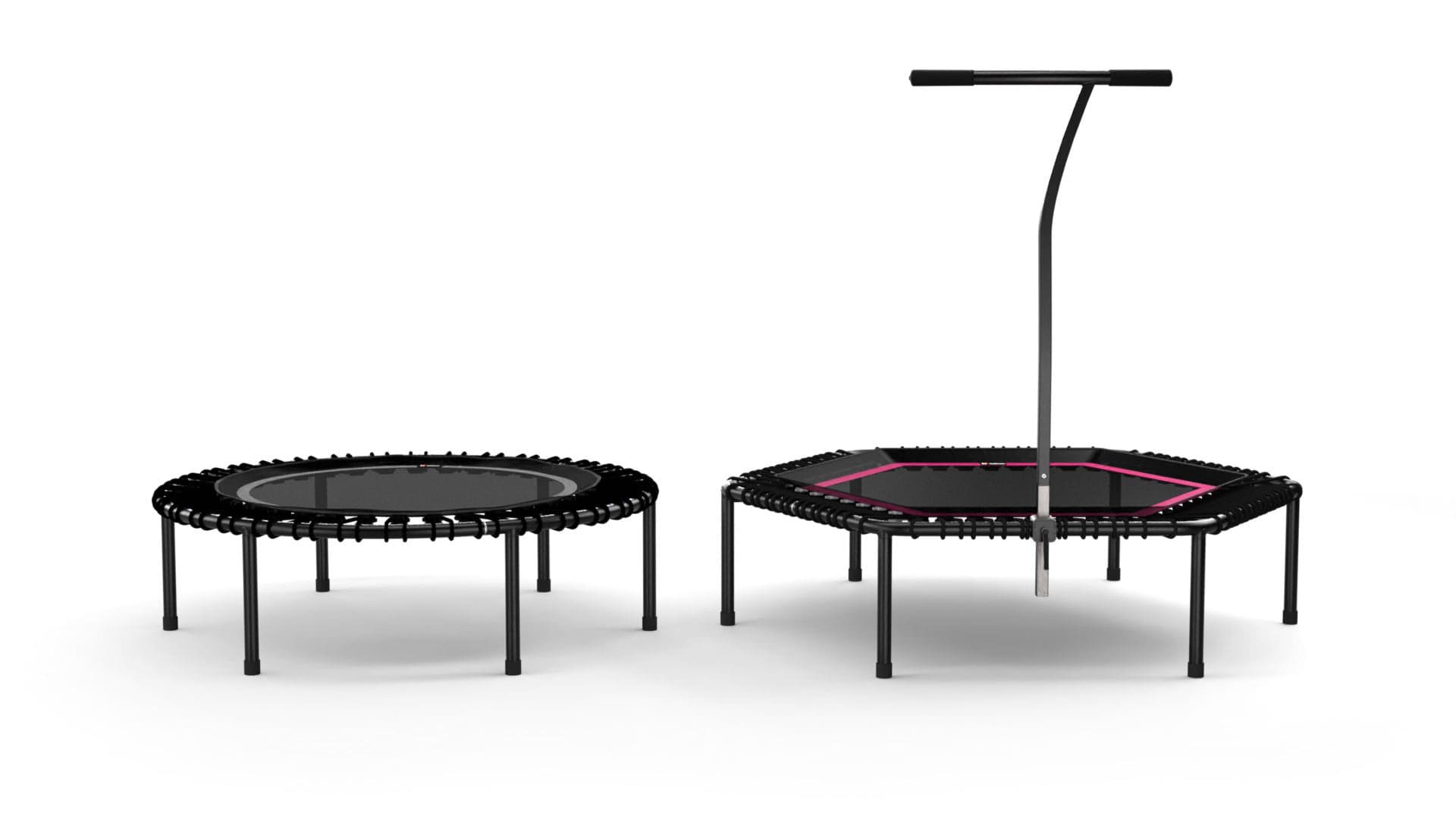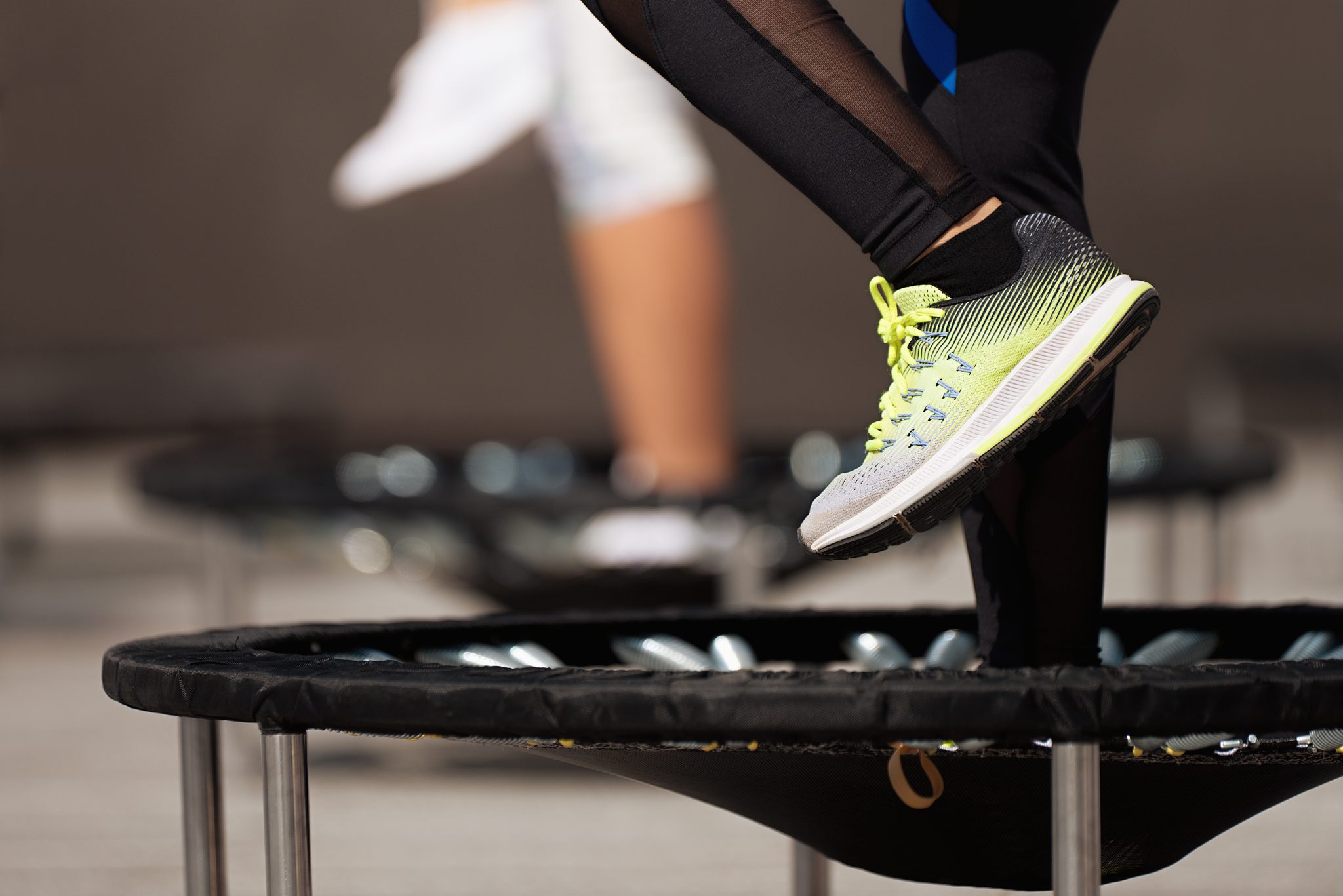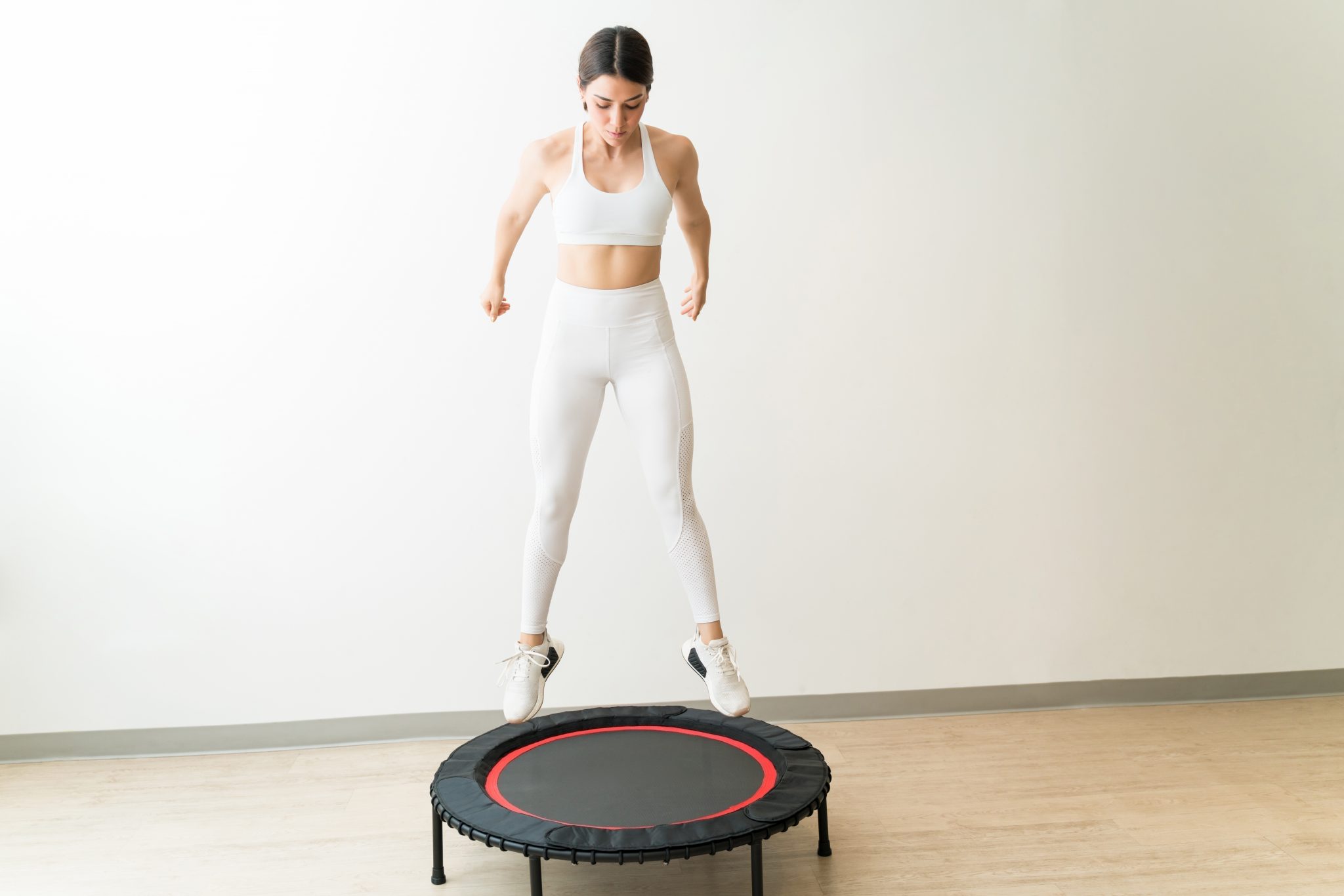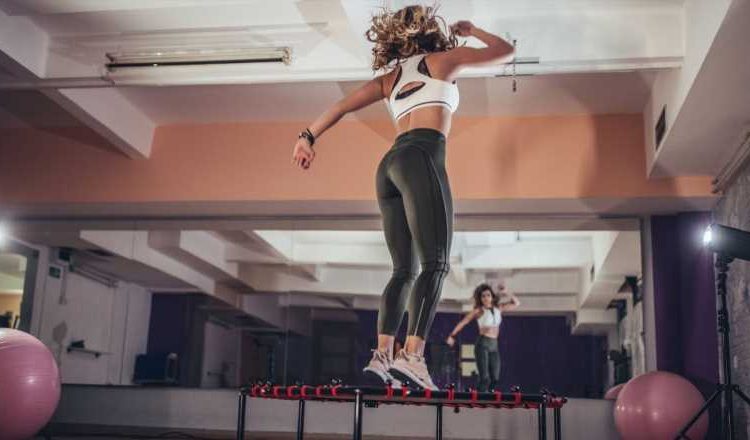The benefits of rebounding for your fitness and health are well documented, but one writer says it was the pure joy it brought that kept her going back.
I have always firmly been of the opinion that real exercise is not for me. I love a long walk and splashing around in the sea every chance I get, but the ‘serious’ working-up-a-sweat stuff felt unwelcoming.
In school, I was the one forging notes to get out of PE. I have never been to any gym where I didn’t feel deeply uncomfortable. Group classes that I shelled out £15 for were excruciatingly embarrassing experiences, either because I couldn’t keep up or let go.
I wore my exercise aversion as a badge of honour in my 20s and 30s, but turning 40 and lockdown changed that. I found myself wanting to look after myself more and working out at home offered an opportunity for embarrassment-free exercise.
Remembering a rebounding class I had taken at Frame in east London, I went on Gumtree and found a dad getting rid of ‘junk’ his kids had grown tired of. And there, among the discarded toys was a mini trampoline, with screw off legs, just three miles from my house, going free.
I carried it home to Hoxton that day (getting some weird looks along the way) and started jumping up and down on it. Although I’ve upgraded my gear since then – I now use a classic Bellicon, introduced 1kg hand weights and invested in a really decent sports bra – I’ve never stopped jumping. It might sound silly, but now I’m actually quite serious about rebounding.
Why rebounding?
The merits of rebounding are well-documented (even NASA approved), and it’s proven that rebounding is better for cardio than running, but that’s just the tip of the iceberg. PT Lauren Roxburgh (whose super-short YouTube videos were all I watched in the beginning) says 10 minutes on the rebounder is equivalent to a 30-40-minute run.
Julia van Kaldekerken, a trainer with Bellicon, believes rebounding is the greatest way to exercise. “It has a lot of benefits for your lymphatic system, your joints, your intervertebral discs, your balance, coordination, stabilisation, muscles and, of course, your cardiovascular system.”
“Working on the flexible surface of a rebounder is joint friendly, helps strengthen the pelvic floor and all the joints surrounding muscles that protect and support our joints,” she continues.
Add to that the fact that it’s low impact and can help prevent osteoporosis and arthritis in later life and you’ve got a pretty strong case for rebounding. But truly, none of that stuff was what got me into it; the most important factor, as van Kaldekerken says,is that “it’s fun – and that’s what keeps people going”.

You may also like
Rebounding: this NASA-approved trampoline workout could be your lockdown obsession
The benefits of rebounding
Van Kaldekerken is right; despite all the advantages I read up on, the biggest change when I started rebounding was that I stopped seeing working out as a chore.
Sometimes when I was feeling down, unmotivated or lazy, I’d tell myself I was just going to get on it and run on the spot for two minutes, but once the two minutes were up I’d find myself not wanting to get off and staying on for 10 minutes. Jumping up and down felt good and filled me with a childlike sense of freedom – I didn’t want to stop. The instinct to throw in the towel left me because, although strenuous, it never felt like the torture I had long associated with exercise.
The simplicity worked for me too – there are myriad classes to follow – from the gentlest of introductions to most high intensity, but the truth is you don’t need any of them to get started. All you have to do is step on it and bounce. Mostly, I’d follow an 10-15 minute tutorial (I like Lauren Roxburgh or Fayth Caruso), but sometimes, tired after work in the dead of winter with the rain pouring down outside, I’d just pull the rebounder in front of the TV and just walk on it while watching Real Housewives. In the mornings if I was pushed for time I’d do 15 minutes while listening to the news or the Guardian Daily podcast. There were days when I was hungover when I’d just lie on my back, hug my knees to my chest and stretch on it. Most times I’d just get on and do a minute of running on the spot, high knees, jumping jacks, jump rope, lunges, planks, squats – everything I hated doing off the rebounder felt good on it.
You may also like
Runners’ high: how to train yourself into feeling great while running

Mental health and rebounding
What I hadn’t expected were the mental health benefits. I noticed how much happier I felt (I’m sure this must be akin to the runner’s high or the adrenaline kick others feel after a kickboxing class but had always eluded me). Every time I came off the rebounder I felt energised and accomplished, and the mood boost lasted all day. After a few days of rebounding in a row, I can see that my outside looks brighter, and my inside feels better. It’s impossible to feel stressed on it.
There were other side effects too. Roxburgh uses a genteel word (‘elimination’) to describe the wonders rebounding does for your bowel movements. And it’s super for the lymphatic system too.
If you struggle with repetitive strain injury (RSI) as I do, it’s a game changer. As I discovered while watching a Bellicon tutorial, just stretching your arms above your head and gently jumping up and down for a few minutes in the morning, or when you have a twinge of pain, works wonders, it’s the best remedy I’ve found.
It’s great for balance too. One simple trick I love is to try to stand perfectly still on the rebounder with your feet and knees together and then close your eyes then try and hold it for 30 seconds to a minute. It sounds simple but requires more concentration than you think.
You may also like
Exercise and stress: the best exercise to help you handle stress and boost a low mood

Can anyone rebound?
Julia van Kaldekerken believes rebounding is the best way to get fit, stay fit, feel good and be healthy no matter what your size, age or fitness level.“Rebounding is for everyone. We offer health-oriented workouts with a focus on bouncing, easy moves, moderate intensity and light coordination to improve the bone structure, sense of balance, cell metabolism, and stabilisation of the body on uneven ground. The nutrition of the cartilage helps with the prevention of dementia, improves stability in everyday life and reduces the pain caused by osteoporosis or arthritis.”
Or, if you want something supercharged, you can do HIIT classes, dance and circuit classes all on the rebounder.
Consistency is something I struggle with in general, not just with my fitness, but in the spirit of the making tiny habits that stick I have challenged myself to step on the rebounder, even if its just to stretch, walk, jog on the spot or dance aroundto Lizzo for a few minutes every day for the rest of the summer. And for the first time ever, that feels totally doable.
I don’t aim to convert anyone to rebounding here; I just want to reassure everyone that you are never too old, too unfit or too late to try something new. It might just turn out to be your thing.
Images: Getty, Bellicon
Source: Read Full Article
